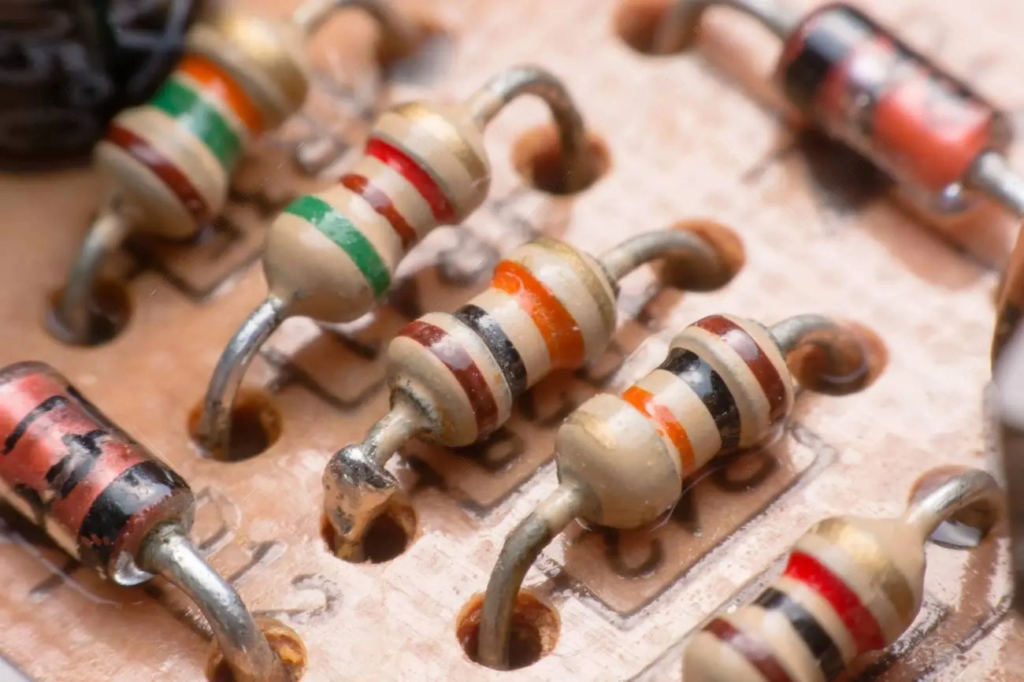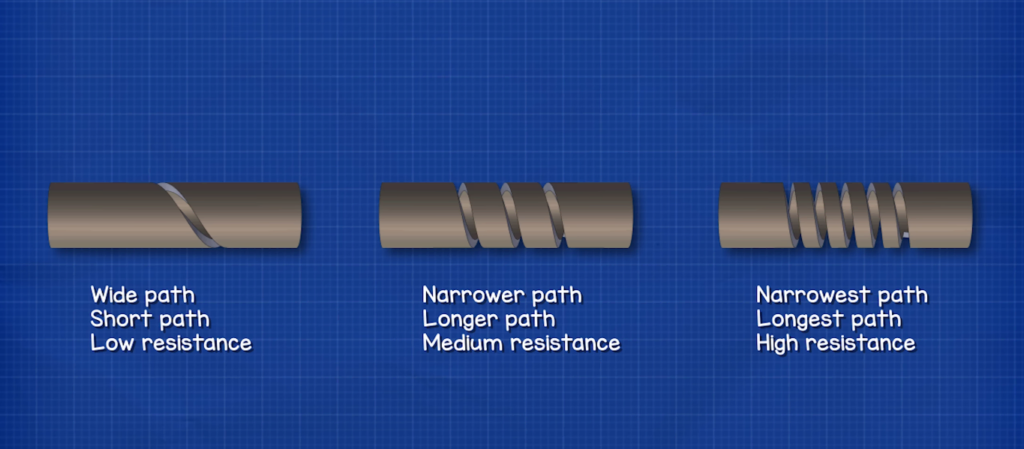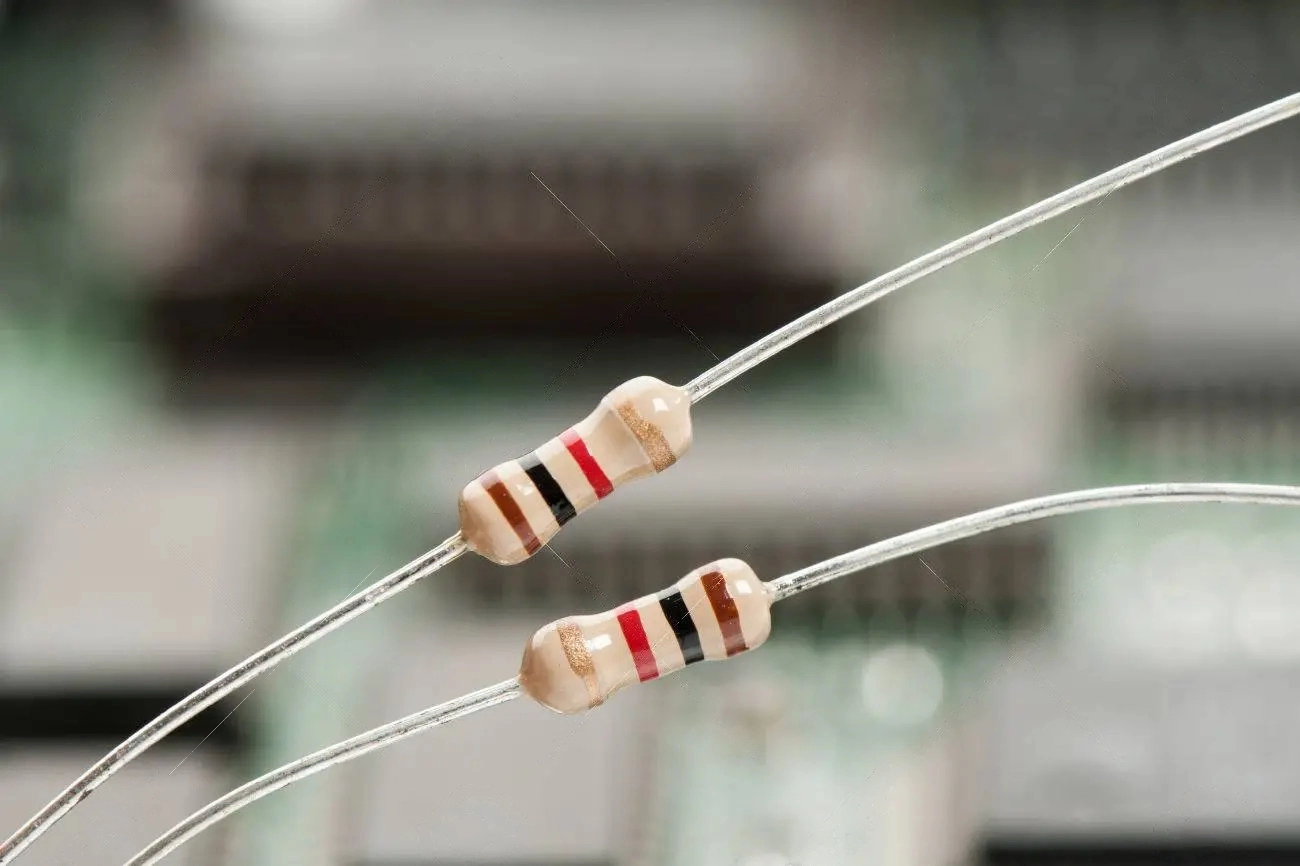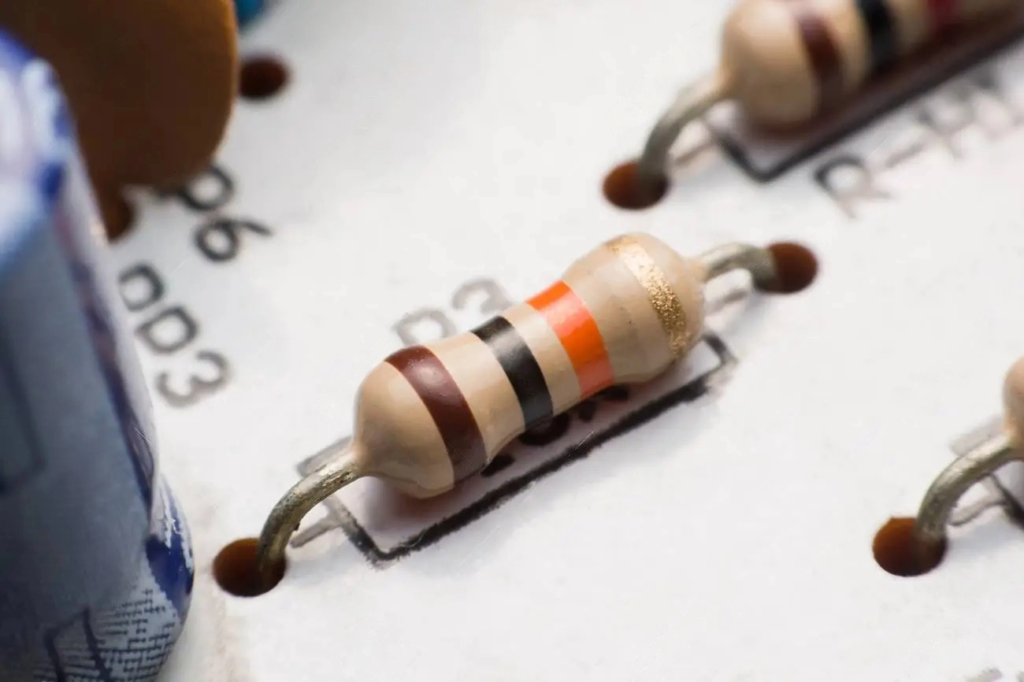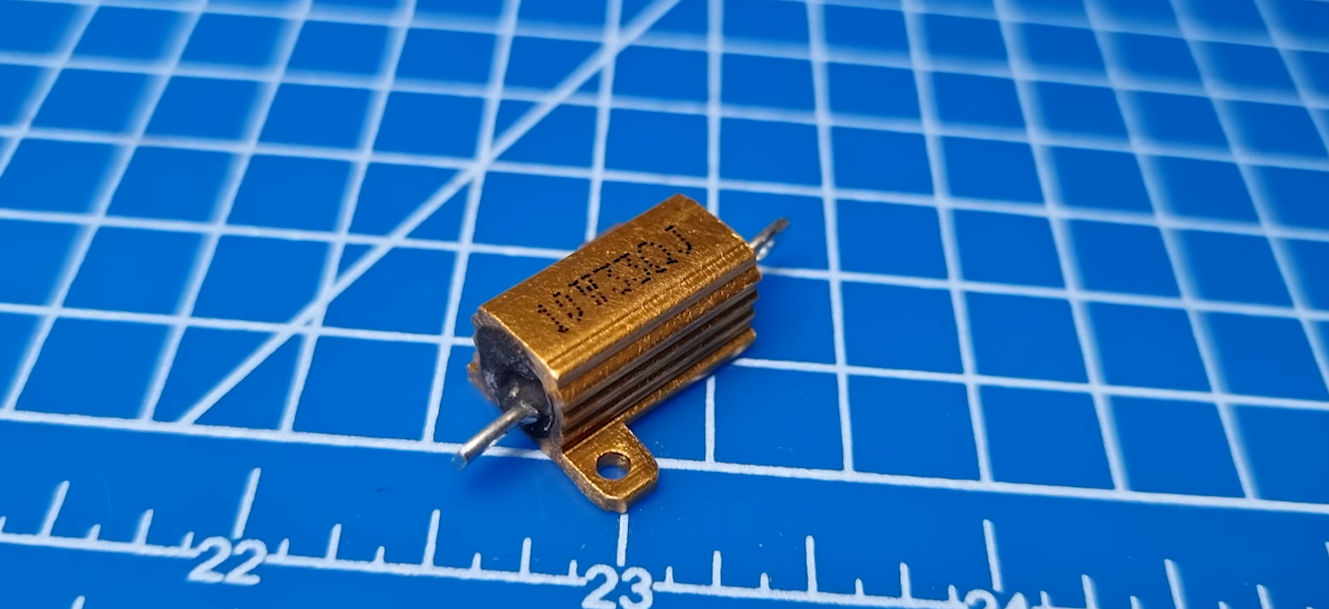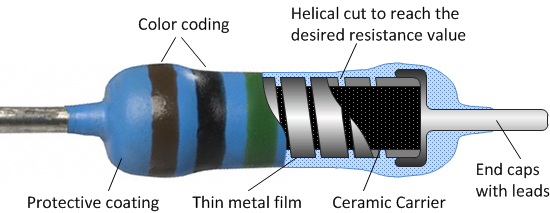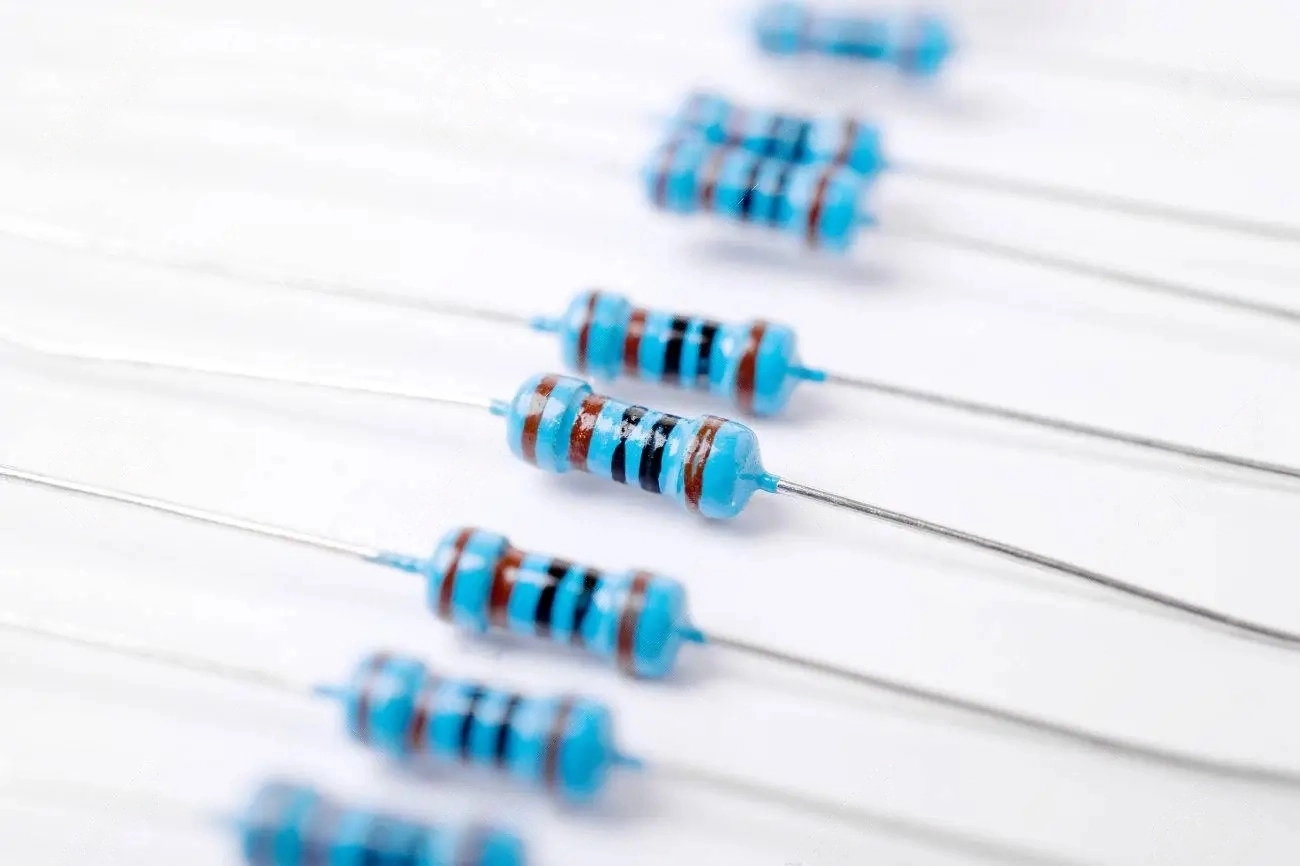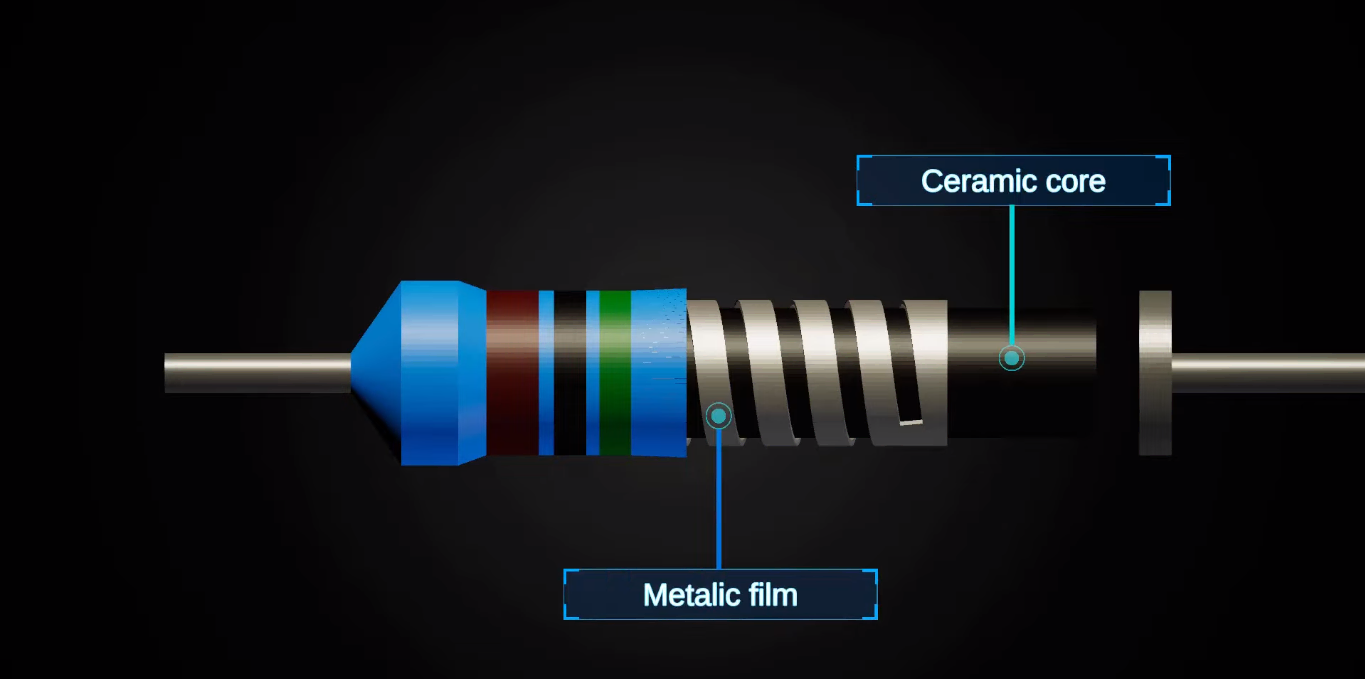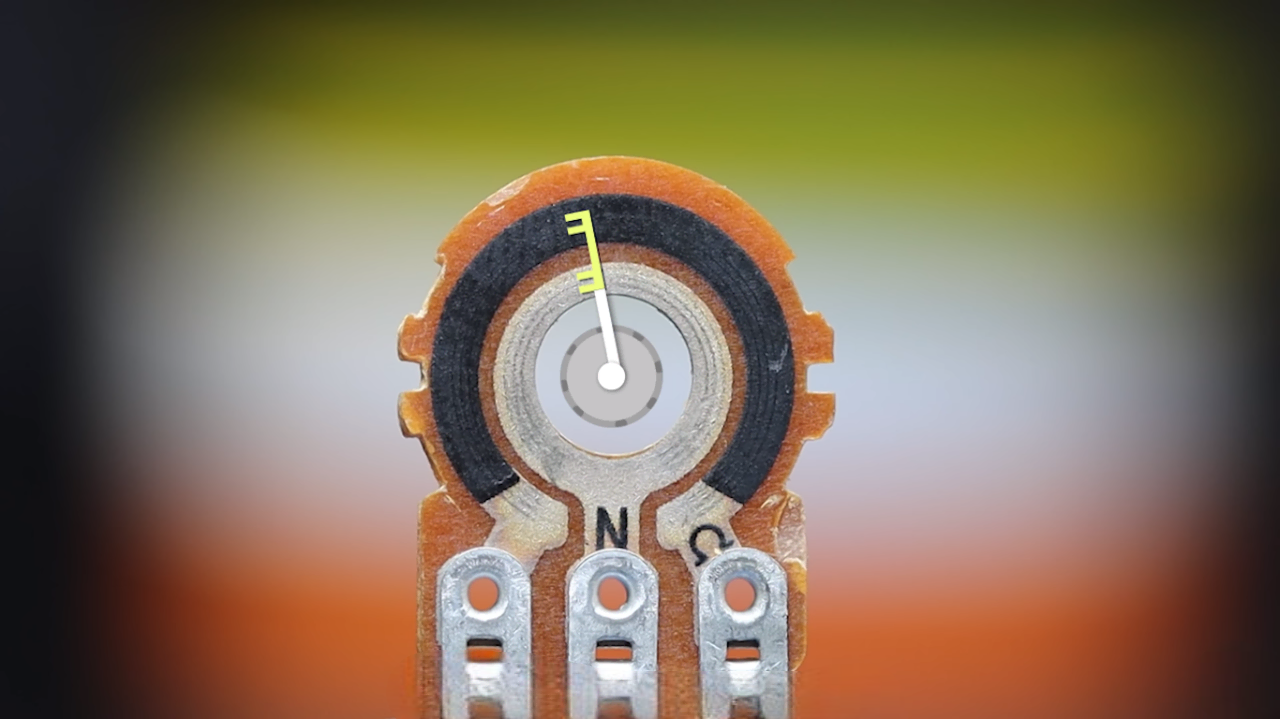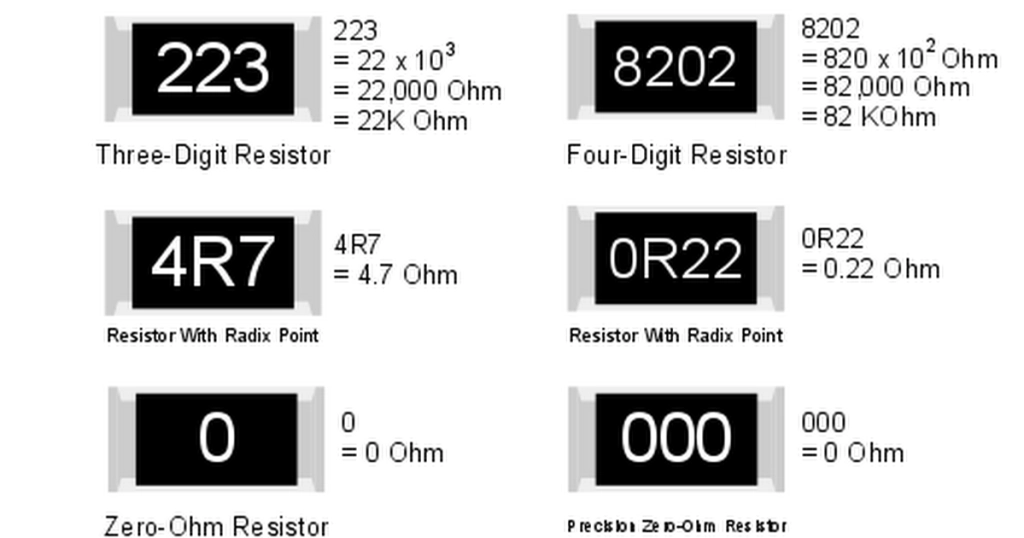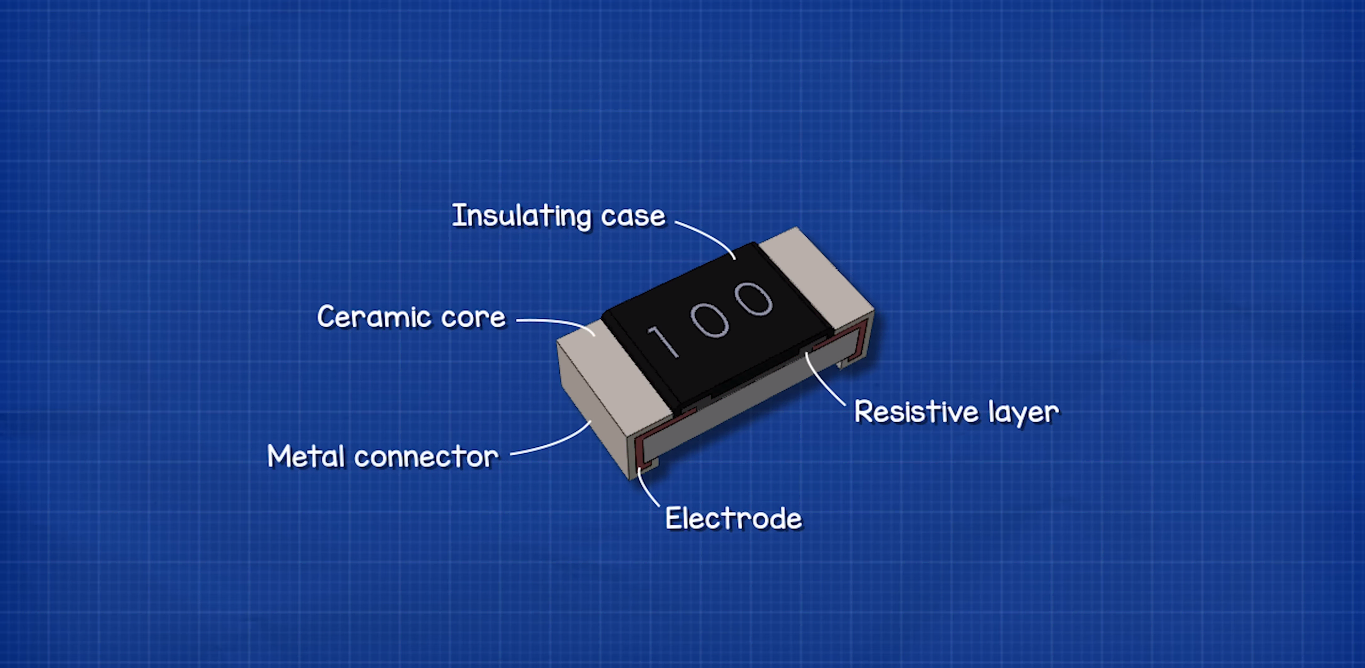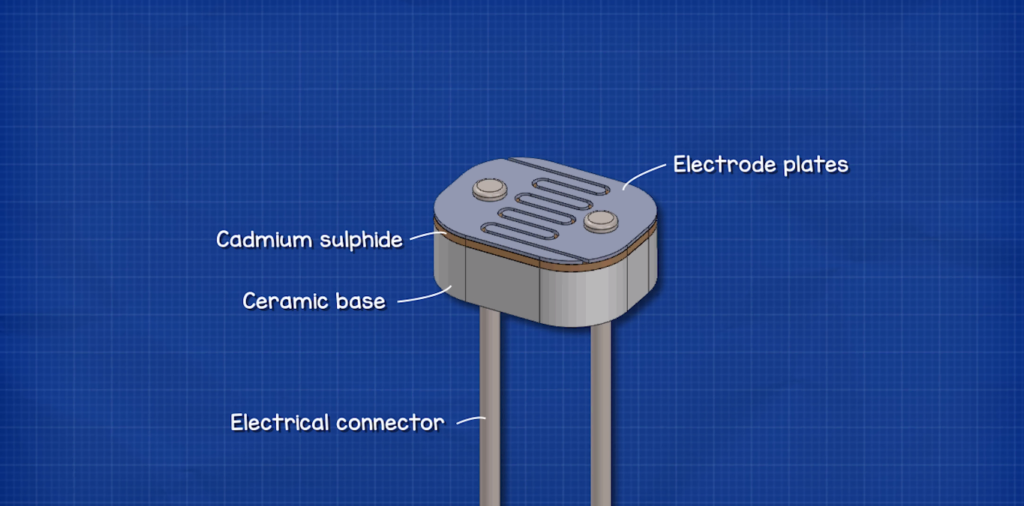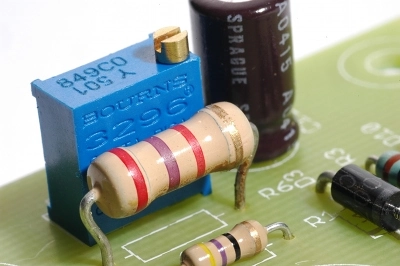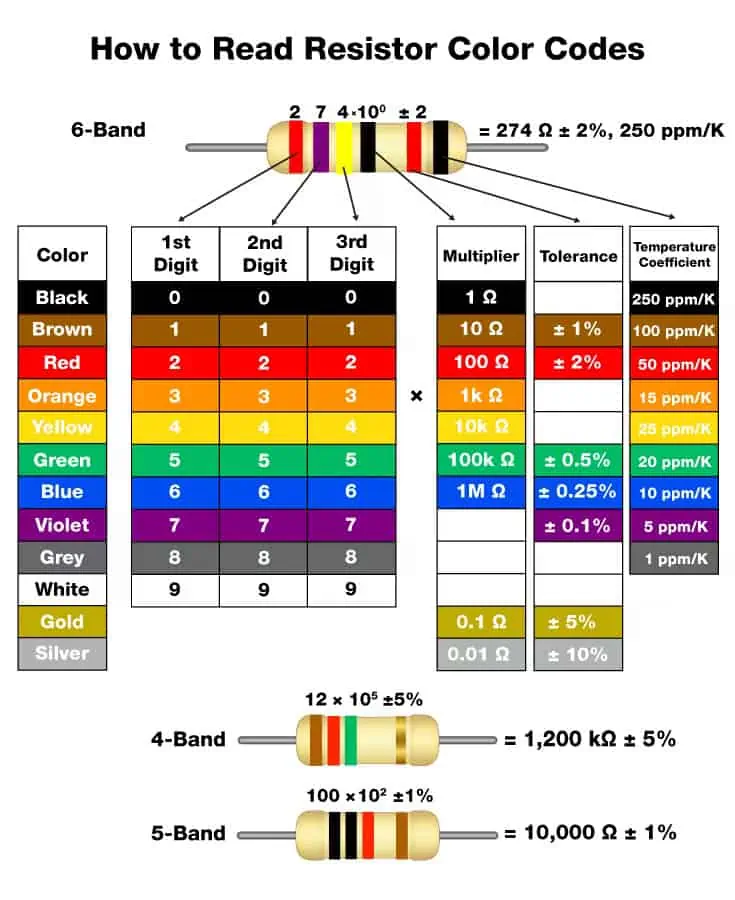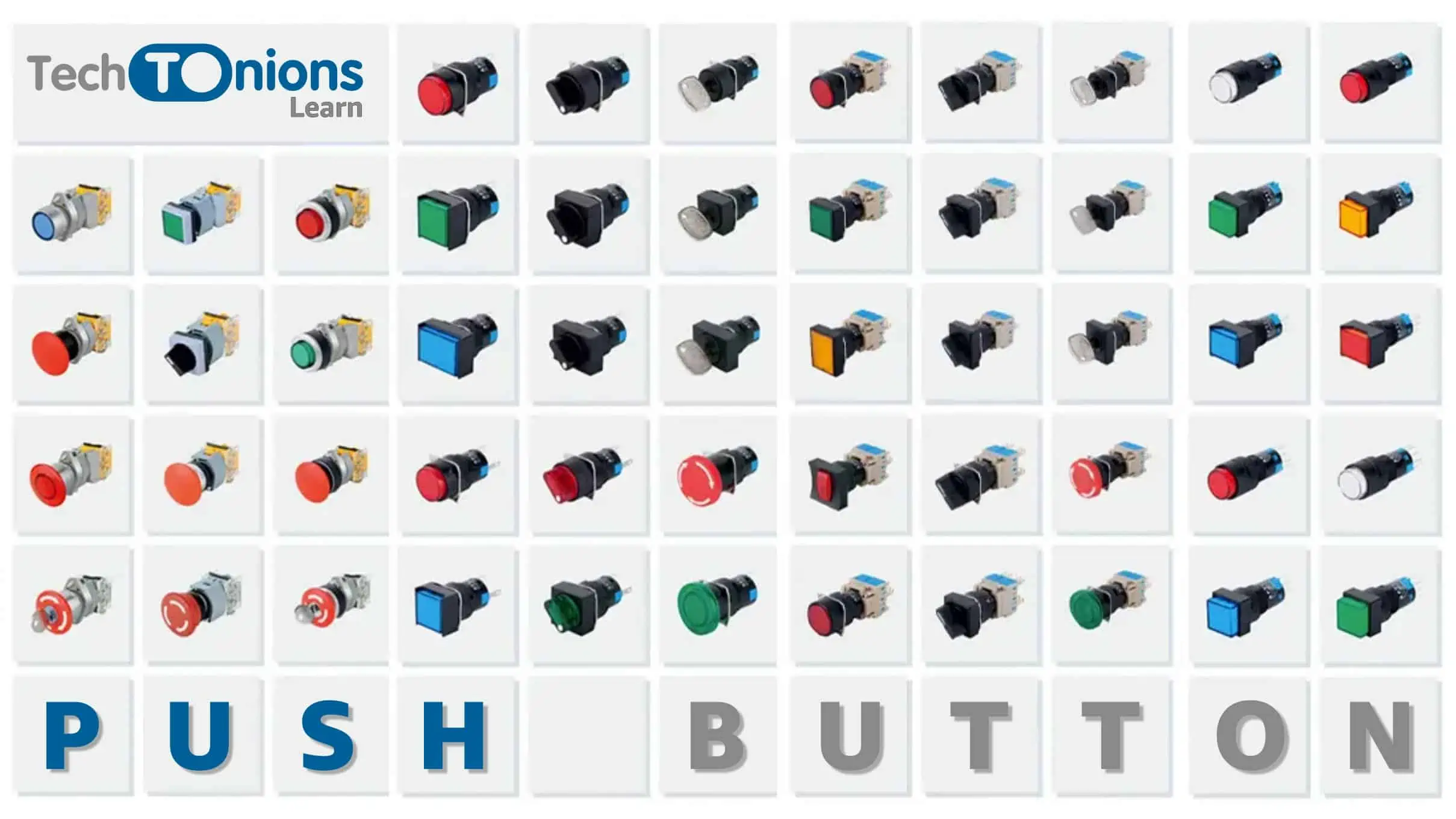This comprehensive article will delve into the different aspects of resistors, from their various types and definitions to the color coding system used to identify them and their standard values. We’ll also explore the significance of resistor symbols and the fundamental question, “What does a resistor do?” So, let’s embark on this enlightening journey through the world of resistors.
Resistors are passive electrical components that resist the flow of electric current.
Electronic circuits widely use them to control voltage levels, limit current, and divide voltages. Understanding the different types of resistors, their properties, and their applications is essential for anyone working with electronics.
What are Resistors?
A resistor is a two-terminal component made of a material with a specific resistance value. When a voltage is applied across its terminals, a resistor creates a resistance that restricts the flow of electric current. The unit of resistance is the ohm (Ω), named after the German physicist Georg Simon Ohm.
Resistor Definition & Symbol
In electronic circuits, a resistor is a passive two-terminal component that restricts the flow of electric current. It is designed to have a specific resistance value, which is measured in ohms (Ω). When a voltage is applied across a resistor, it generates a voltage drop proportional to the current flowing through it, following Ohm’s law (V = I * R).
In circuit diagrams and schematics, a specific symbol represents resistors.
The universally recognized resistor symbol consists of a rectangle with two terminals, one at each end.
The symbol helps engineers and technicians understand the presence and location of resistors in electronic circuits at a glance.
How Do Resistors Work?
Resistors work based on the principle of Ohm’s law(Ω), which states that the current passing through a conductor is directly proportional to the voltage across it and inversely proportional to its resistance. In other words, higher resistance results in lower current flow for a given voltage.
Resistor Resistance
The path that the current takes through the resistor can significantly influence its resistance. In particular, the width or cross-sectional area of the path and its length play critical roles.
Narrow Path
When the current flows through a narrow path in a resistor, the available space for the electrons is limited. As a result, the electrons experience more collisions with the atoms or ions in the resistor’s material.
Wide Path
Conversely, when the current flows through a wider path in a resistor, the available space for the electrons to move increases. This wider path allows the electrons to move more freely, experiencing fewer collisions with the atoms or ions.
Types of Resistors
Resistors come in various forms, each tailored to suit specific applications. Understanding the different types of resistors is crucial for selecting the appropriate one for a particular circuit. Here are some common types of resistors:
Fixed Resistors
Fixed resistors, as the name suggests, have a predetermined resistance value that cannot be changed. They are available in various forms, including carbon composition, metal film, and wire wound resistors. A variety of electronic circuits use this type of resistor due to its simplicity and reliability.
- Carbon Composition Resistors
- Cermet Oxide Resistors
- Wire Wound Resistors
- Thin Film Resistors
- Metal Film Resistors
1. Carbon Composition Resistors
Carbon composition resistors are one of the earliest and most basic types of resistors. Mixing carbon particles with a binder and then molding the mixture into a cylindrical shape makes these resistors, known for their simplicity and wide availability.
Low Cost: Carbon composition resistors are inexpensive to manufacture, making them widely used in many low-cost electronic devices.
Tolerance: They offer relatively loose tolerance values, which is acceptable for many general electronic applications.
2. Cermet Oxide Resistors
Cermet oxide resistors are types of resistor that combines the properties of ceramic and metal materials. The name “cermet” means “ceramic” and “metal,” signifying the nature of their composition.
Advantages
Stability: Cermet oxide resistors offer high stability over a wide range of operating temperatures. This makes them suitable for use in critical and precision electronic circuits.
Low Inductance: Their construction results in low parasitic inductance, which is advantageous in high-frequency applications.
3. Wire-wound Resistors
Wire wound resistors are known for their high power-handling capabilities. They consist of a metal wire wrapped around an insulating core and find applications in power electronics.
The wire is then coated with an insulating material to protect it from external elements.
Advantages
High Precision: Wire wound resistors offer high precision and tight tolerance values, making them suitable for precision measurement and calibration circuits.
Low Inductance: Wire wound resistors have low parasitic inductance, making them suitable for high-frequency applications.
4. Thin Film Resistors
These types of resistors are precision resistors that utilize a thin film of resistive material deposited on a ceramic or silicon substrate. These resistors offer high accuracy, stability, and low noise performance.
Advantages
High Precision: Thin film types resistors offer exceptional precision and tight tolerance values, making them suitable for high-precision circuits and applications.
Stability: They have excellent long-term stability and low-temperature coefficient of resistance (TCR(link)), ensuring reliable performance over time.
5. Metal Film Resistors
Metal film resistors offer higher precision and stability compared to carbon composition resistors. Commonly used in audio equipment, communication systems, and precision measuring instruments use them.
Advantages
Precision and Tight Tolerance: Metal film resistors offer high precision and tight tolerance values, ensuring that the actual resistance closely matches the specified resistance value.
Low-Temperature Coefficient: They have low-temperature coefficients of resistance (TCR), meaning their resistance changes minimally with temperature.
Variable Resistors
Variable resistors, also known as potentiometers or rheostats, have an adjustable resistance. They allow users to vary the resistance within a specified range manually.
It is a three-terminal device, and its resistance can be varied to control the flow of electric current or adjust the voltage in a circuit. Each type of variable resistor serves specific purposes and offers unique advantages.
1. Potentiometers
Potentiometers are variable resistors designed to divide voltage in a circuit. They consist of a resistive element connected between two fixed terminals and a movable terminal called the wiper. As the wiper is adjusted, the effective resistance between the fixed terminals changes, allowing users to vary the voltage across the wiper.
Advantages
User Adjustability: They offer manual adjustment, making them user-friendly and versatile in various electronic devices.
Audio and Volume Control: They are commonly used in audio equipment for volume control, tone adjustments, and balancing channels.
2. SMD Resistors
Surface Mount Device (SMD) resistors are compact and suitable for modern PCB designs. Miniaturized electronics and densely populated circuits use SMD Resistors
SMD resistors are made using a thin film or thick film technology. They deposit the resistive element on a ceramic substrate or print it on a glass or ceramic carrier.
Advantages
Compact Size: SMD resistors are very small and compact, making them suitable for miniaturized electronic devices and space-constrained PCB designs.
Low Parasitic Effects: Their small size results in low parasitic capacitance and inductance, which is advantageous in high-frequency applications.
3. Rheostats
A specific type of variable resistor, rheostats, is designed to control current flow in a circuit. Unlike potentiometers, they only have two terminals, and the resistance value is varied by adjusting the position of the sliding contact along the resistive element.
Advantages
Heat Dissipation: Rheostats can act as a resistive load, dissipating excess power as heat.
Electric Motors: They control the speed and torque of electric motors, providing variable resistance in motor circuits.
4. LDR Resistor (Light Dependent Resistor)
A Light Dependent Resistor (LDR) is a type of resistor that exhibits changes in resistance based on the intensity of light falling on its surface. It is also known as a photoresistor or photocell.
The working principle of an LDR is based on the phenomenon of the photoelectric effect. When photons of light strike the semiconductor material, they excite the electrons, allowing them to move freely and reducing the material’s resistance. The more light that reaches the LDR, the more conductive it becomes.
Advantages
Light Sensing Capability: The primary advantage of LDRs is their ability to detect and respond to changes in light intensity. They are commonly used in automatic lighting systems, streetlights, and camera exposure control.
Instant Response: LDRs provide an almost instant response to changes in light intensity, making them suitable for real-time light detection and control.
5. Trimmers
Trimmers, also known as trim potentiometers or preset resistors, are small variable resistors designed for occasional or one-time adjustments during circuit calibration or tuning. They are miniature versions of potentiometers with screwdriver slots or small screw heads for adjustment.
Advantages
Calibration and Tuning: Trimmers are used for initial circuit calibration or fine-tuning during production to achieve precise resistance values.
Compact Size: Their small size allows easy integration into compact electronic devices and circuit boards.
Mastering Resistor Color Coding
To identify the value and tolerance of a resistor, engineers use color-coded bands. The color bands represent digits, multipliers, and tolerances that determine the resistor’s properties.
The color bands on a resistor indicate its resistance value, tolerance, and sometimes its temperature coefficient. It consists of different color bands, each representing a specific digit or multiplier. Here’s how it works:
- Band 1: The first band represents the first digit of the resistance value.
- Band 2: The second band represents the second digit of the resistance value.
- Band 3: The third band represents the multiplier that multiplies the first two digits.
- Band 4: The fourth band (if present) indicates the tolerance of the resistor.
- Band 5: The fifth band indicates specific tolerance.
- Band 6: The sixth band includes an additional band to indicate the temperature coefficient.
For example, if a resistor has the color bands: Yellow (4), Violet (7), Red (100), and Gold (5%), its resistance value can be calculated as 47 * 100 = 4.7 kΩ with a tolerance of ±5%.
In this explanation, we’ll focus on 5-band and 6-band resistors.
5-Band Resistor:
A 5-band resistor has an additional band to provide greater precision in resistance values. The first three bands represent the significant digits, the fourth band indicates the multiplier and the fifth band specifies the tolerance.
For example, if we have a 5-band resistor with bands of colors: Brown, Black, Green, Orange, and Red, we can interpret it as follows:
- Brown: 1 (first significant digit)
- Black: 0 (second significant digit)
- Green: 10 (third significant digit)
- Orange: 10^3 (multiplier, 10^3)
- Red: ±2% (tolerance)
The resistance value is calculated as 100 x 10^3 = 100,000 ohms (or 100 kilohms) with a tolerance of ±2%.
6-Band Resistor:
A 6-band resistor is used for high-precision applications and is similar to the 5-band resistor, but it includes an additional band to indicate the temperature coefficient.
For example, if we have a 6-band resistor with bands of colors: Blue, Gray, Red, Silver, Brown, and Green, we can interpret it as follows:
- Blue: 6 (first significant digit)
- Gray: 8 (second significant digit)
- Red: 100 (third significant digit)
- Silver: 10^(-2) (multiplier, 0.01)
- Brown: ±1% (tolerance)
- Green: 50 ppm/°C (temperature coefficient)
The resistance value is calculated as 68 x 100 x 0.01 = 68 ohms with a tolerance of ±1% and a temperature coefficient of 50 ppm/°C.
How to Read Resistor Color Code
The resistor color code typically consists of four or five color bands, depending on the precision of the resistor. The first two bands represent the significant digits of the resistance value, the third band indicates the multiplier, and the fourth band (if present) denotes the tolerance.
1. Colors and Their Corresponding Values
A numeric value is associated with each color, Simply match the colors on your resistor with the corresponding values in the table, and you’ll have the resistance value right at your fingertips.
| Color | Code |
|---|---|
| Black | 0 |
| Brown | 1 |
| Red | 2 |
| Orange | 3 |
| Yellow | 4 |
| Green | 5 |
| Blue | 6 |
| Violet/Purple | 7 |
| Grey | 8 |
| White | 9 |
2. Significant Digits
The first two bands represent the significant digits of the resistor’s resistance value. For example, if the first band is brown and the second band is black, the resistor’s resistance value starts with the digits “1” and “0”, which means 10 ohms.
No more confusion or second-guessing; with this chart, you’ll decode resistor color codes like a pro.
3. Multiplier Band
The third band represents the multiplier that needs to be applied to the significant digits to obtain the final resistance value. It is crucial for resistors with values greater than 10 ohms since the value alone would be too small. The multiplier is based on powers of 10:
- Black: ×1 (10^0)
- Brown: ×10 (10^1)
- Red: ×100 (10^2)
- Orange: ×1,000 (10^3)
- Yellow: ×10,000 (10^4)
- Green: ×100,000 (10^5)
- Blue: ×1,000,000 (10^6)
- Violet/Purple: ×10,000,000 (10^7)
For instance, if the third band is red, the significant digits (say, 20) should be multiplied by 100 (10^2), resulting in a resistance value of 2000 ohms or 2 kilohms.
4. Tolerance Band
For precision resistors, a fourth band is present, indicating the tolerance of the resistor’s resistance value. Tolerance refers to the permissible deviation from the specified resistance value. The most common tolerance values are:
- Gold: ±5%
- Silver: ±10%
- None: ±20%
For example, if the fourth band is gold, the resistance value of the resistor can deviate by ±5% from the stated value. So, a 2-kilohm resistor with a gold tolerance band may have an actual resistance between 1.9 kilohms and 2.1 kilohms.
Example
Let’s consider a resistor with the following color bands:
- First Band: Brown (1)
- Second Band: Black (0)
- Third Band: Red (×100)
- Fourth Band: Gold (±5%)
The resistance value can be calculated as follows: 10 (significant digits “1” and “0”) × 100 (multiplier for red) = 1000 ohms or 1 kilohm.
Considering the ±5% tolerance, the actual resistance of this resistor would be between 950 ohms and 1050 ohms.
Resistor Standard Values and Tolerances
Understanding the color codes helps in identifying resistor values and tolerances accurately. This knowledge is crucial when selecting resistors for specific applications.
Resistors are manufactured in standard values to ensure compatibility and interchangeability in electronic circuits. The standard values are based on the E series, which follows a logarithmic scale. Some of the commonly used resistor standard values are:
- E6 Series: 10, 15, 22, 33, 47, 68
- E12 Series: 10, 12, 15, 18, 22, 27, 33, 39, 47, 56, 68, 82
- E24 Series: 10, 11, 12, 13, 15, 16, 18, 20, 22, 24, 27, 30, 33, 36, 39, 43, 47, 51, 56, 62, 68, 75, 82, 91
Using standard values simplifies circuit design and component selection, as engineers can easily find resistors with the desired resistance from the available standard options.
Applications of Resistor
From everyday gadgets to complex industrial systems, resistors play a crucial role in a wide array of applications. Let’s explore some of the applications of resistors:
1. Current Limiting
One of the primary functions of a resistor is to limit the flow of current in a circuit. By providing a specific resistance, a resistor can control the amount of current that passes through a component or an entire circuit. This is especially important in high-power applications, where excessive current could damage components or lead to hazards.
2. Voltage Division
Resistors are commonly used in voltage divider circuits, where they divide the total voltage into smaller fractions. This is valuable in various applications, such as providing reference voltages or biasing transistor circuits.
3. LED Current Limiting
When you see an LED shining brightly, it’s likely due to a resistor. These components are used to limit the current flowing through LEDs, ensuring they operate safely and efficiently.
4. Signal Conditioning
In electronic systems, resistors are used for signal conditioning, which involves modifying the characteristics of an electrical signal. They can alter the amplitude, frequency response, and other properties of the signal to meet specific requirements
5. Temperature Sensing
Certain types of resistors, such as thermistors, exhibit changes in resistance with variations in temperature. These properties make them suitable for temperature sensing and compensation applications,
6. Noise Reduction
Resistors can be used in circuits to reduce electrical noise and interference, ensuring cleaner and more reliable signals. This is particularly important in sensitive electronic systems where accurate signal transmission is critical.
Conclusion
Resistors are indispensable components in the world of electronics, providing precise control over current flow and facilitating the proper functioning of electronic circuits. From fixed to variable resistors, each type of resistor serves its purpose in different applications. The resistor color code simplifies identification, while standard values ensure compatibility and ease of use.
So, the next time you encounter an electronic device, take a moment to appreciate the tiny but mighty resistor working behind the scenes to make it all possible.

